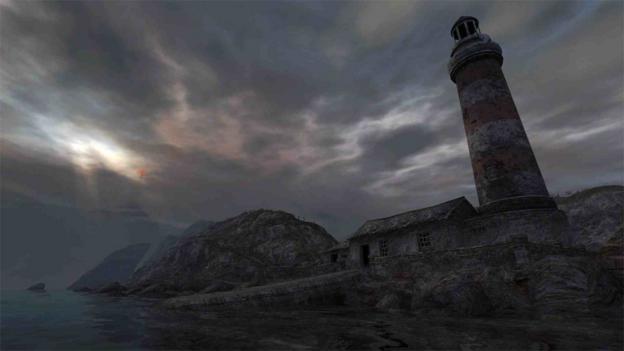Tracey Valliere-Evans
BA (HONS) Design: Creative Media 2012-13
Pages
- Home
- Me
- Dissertation: Edited Version & Notes
- Neg1 Intro
- Neg1 ViceVersa/Reflect
- Neg1 Bucquet List
- Neg1 Cuddles&Chaos
- Neg1 Claire House
- Neg1 Door of Hearts
- Neg1 Fashion
- Neg2 MANMADe Mermaid (MM)
- Neg2 MM Logo/Branding
- Neg2 MM Characters
- Neg2 MM HUD's/Loading Pages/Environments
- Neg2 Textures
- Creative Futures 3
Friday 9 August 2013
Tuesday 6 August 2013
25 design agencies to follow on Twitter | Agencies | Creative Bloq
25 design agencies to follow on Twitter | Agencies | Creative Bloq; includes The Partners, whose own Robert Ball, gave a talk at Glyndwr Creative Futures Week!
Their Blog: The Crossed Cow
Their Blog: The Crossed Cow
Monday 5 August 2013
Photographer Paul Nicklen Biography: Polar Bears Swim
Underwater swimming polar bears; movement, textures & colours!
Friday 2 August 2013
Thursday 1 August 2013
The Rise of ‘Art House’ Gaming
I was sent a link to this article by a friend, but was unable to access it, & so I asked for it to be copied & pasted into an e-mail for me; see article below.
I have a vast range of game ideas, & some of these rely in beautiful images/imagery; an integral part of the appeal to the game, & are not mainstream 'action' or 'platform'. I do take into consideration the emotive appeal, style & narrative, psychological reaction & attraction, of my games, & what the branding will evoke. However, I am not sure 'ArtHouse' games is really the tag I would want to attach/categorise some of my games in; they are not deep or abstract, but have beauty in design to view. (Well maybe 1 does have a leaning more toward the abstract; Vice Versa, but nothing too 'high-brow/art-scene', that's not my intended 'niche' market.) As Sunni Pavlovic, studio manager for thatgamecompany (developers of Journey) said, "The problem here is that the term ‘art house’ is not without emotional baggage. "[art house] implies a kind of sophistication and elitism that may feel irrelevant to the mass audience,...turns off potential audiences who feel a product is ‘not for them’ or comes with some kind of cultural barrier of entry to be sufficiently entertaining or meaningful." My thoughts too, but could not have phrased it more eloquently, but the author says "...borrowing the language of other art forms may be the best way to describe what we’re playing." but I can only tend to disagree, as these terms are already 'niched' & await what terminology will arise to successfully describe this newer style of game. I have also been reading on the 'Narrative' of games, as I enjoy messing with words & writing, hence I found a lot of this article extremely apt to my studies, & in the way I am hoping to develop my new career path.
The rise of ‘art house’ gaming






I have a vast range of game ideas, & some of these rely in beautiful images/imagery; an integral part of the appeal to the game, & are not mainstream 'action' or 'platform'. I do take into consideration the emotive appeal, style & narrative, psychological reaction & attraction, of my games, & what the branding will evoke. However, I am not sure 'ArtHouse' games is really the tag I would want to attach/categorise some of my games in; they are not deep or abstract, but have beauty in design to view. (Well maybe 1 does have a leaning more toward the abstract; Vice Versa, but nothing too 'high-brow/art-scene', that's not my intended 'niche' market.) As Sunni Pavlovic, studio manager for thatgamecompany (developers of Journey) said, "The problem here is that the term ‘art house’ is not without emotional baggage. "[art house] implies a kind of sophistication and elitism that may feel irrelevant to the mass audience,...turns off potential audiences who feel a product is ‘not for them’ or comes with some kind of cultural barrier of entry to be sufficiently entertaining or meaningful." My thoughts too, but could not have phrased it more eloquently, but the author says "...borrowing the language of other art forms may be the best way to describe what we’re playing." but I can only tend to disagree, as these terms are already 'niched' & await what terminology will arise to successfully describe this newer style of game. I have also been reading on the 'Narrative' of games, as I enjoy messing with words & writing, hence I found a lot of this article extremely apt to my studies, & in the way I am hoping to develop my new career path.
The rise of ‘art house’ gaming
By Philippa Warr
22 July 2013
Video games are still carving their identity in the worlds of entertainment and culture, and media coverage often looks to other industries for points of reference. Cinema is one of the most frequently used, with ‘blockbuster’, a term borrowed from Hollywood, acting as shorthand for commercially successful mega-budget franchises like Grand Theft Auto. But those characterisations are often too broad and a wealth of games are left unaccounted for. Is art house cinema a useful reference point for these harder-to-pin-down games?
The games in question are generally those that challenge traditional ideas of what a video game should be. They are more concerned with atmosphere and mood than with tasks, thrills and action. Two of the best known in recent years – Dear Esther and Journey – involve crossing landscapes, perhaps real or maybe psychological. Bientôt L'été features a virtual beach where the waves bring thoughts pulled from novels by Marguerite Duras. Kentucky Route Zero is point-and-click game with an atmosphere of magic realism and a focus on dialogue.
Their unifying characteristic is what they aren’t rather than what they are: none of them fits the traditional video game mould . And it is in describing them to a non-gaming audience, that the art house comparison can be useful. Art house is itself a difficult genre to pin down, most people know an art house film when they see one. Broadly speaking, it favours artistic or experimental vision rather than packing audiences into a multiplex.
Graham Smith, editor of PC Gamer, says one of the benefits of the comparison is that it allows us to see how more experimental gaming sits in relation to famous franchises like Call of Duty. "I think there's certainly a growing art game scene, and how that relates to mainstream games is similar to the way art house cinema often reflects and responds to mainstream cinema."
Smith also sees similarities between our growing access to the tools of game production and those used in making movies. "I think there are parallels between the rise of tools like Unity and GameMaker, and the way that cheap and accessible cameras and editing software led to a boom in indie filmmaking in the early ‘90s." When games become cheaper and easier to make, it's not just big studios who get to release them.
Telling stories
Jessica Curry, a composer and co-director of game studio The Chinese Room (the developers behind Dear Esther), trained at the UK's National Film and Television School and offers a different perspective. "I can think of a lot of games that I would consider to be art but very few that would measure up to the art house film comparison. I think that we're still in the very early stages of exploring narrative and character in the games industry and I think that this is one of the real strengths of art house cinema.
"This to me is where games are still lacking - that in-depth dissection of story and protagonists. I still haven't had an experience in gaming that has touched me as profoundly as many of the films I have watched in my life and that is a problem for me."
New York’s MoMA recently added a selection of games to its collection - titles like Dwarf Fortress, Tetris, SimCity 2000 and flOw. Speaking with Paola Antonelli, curator of the museum's department of architecture and design, the move wasn't a comment on whether video games constitute art but an effort to collect exemplary forms of interaction design. "I don't believe that art is something design aspires to," she says.
"We try not to engage in debates as to whether games are art because it tends to be too abstract to be meaningful," adds Sunni Pavlovic, studio manager for thatgamecompany (developers of Journey). "Games are entertainment, and entertainment is a form of art. As the developers we find it nearly impossible to apply the commonly applied genre tags to Flower and Journey because we intentionally set out to create an innovative experience that hasn’t previously existed in games."
Even with Curry's film studies background she admits the comparison can be problematic. The Chinese Room's creative director is Dan Pinchbeck, Curry's husband. She tells the story that when they met her favourite movie was The Double Life of Véronique and Dan's was Waterworld. "When people say to Dan that Dear Esther is the first truly art house game he always splutters and looks absolutely murderous. I, on the other hand, take it as a huge compliment."
The problem here is that the term ‘art house’ is not without emotional baggage. "[art house] implies a kind of sophistication and elitism that may feel irrelevant to the mass audience," says Pavlovic. "That turns off potential audiences who feel a product is ‘not for them’ or comes with some kind of cultural barrier of entry to be sufficiently entertaining or meaningful."
Smith highlights art house's shortcomings as a label by bringing up another broad genre term – 'indie' or 'independent' gaming. "It has the same counter-to-mainstream implication of being progressive, driven by artistic freedom, but people think of bands they like instead of slow black-and-white movies about people silently crying in the ruins of Russian-occupied post-war Berlin. It means you alienate fewer people, and sometimes that leads to people trying things they would have otherwise assumed they wouldn't like, and it definitely leads to a more sustainable market for left-of-centre experiences."
Layers of meaning
Comparing gaming to art house cinema, as with comparisons between gaming and any other cultural genre, is most useful when trying to explain a relatively young medium to those who don't habitually play. Comparing games to movies makes them intelligible in an immediate way. And comparing them to an intelligent or experimental sub-genre within movies adds another layer. They're not just dumb collections of pixels – there are messages, experiences and subtlety to be found.
The problem of metaphor and description is one Antonelli encountered in the museum setting, albeit from a design point of view. "Often I had to look for examples in the design collection. Pre-existing examples that would help me explain what I meant. [A game is] spatial so it has some architecture in it, it's about time so it has some cinematography in it. But, first and foremost, it's about behaviours and experience."
Likening games to art house cinema is another way of opening them up to a wider audience. It's useful to a point, but sometimes risks obscuring the subject it is intended to clarify. By considering games in the same way as movies we can lose sight of key aspects like interactivity. There are comparisons which are more helpful when considering video games’ cultural value.
"Movies established their cultural worth, and their merit as a form of entertainment and art for adults very early on," says Smith. "Comic books and games both started as juvenile junk food; they both scared parents and governments into thinking the medium would rot the brains of children; and both have struggled to shake off that image even as they've diversified."
Eventually we will reach a point where gaming can be understood using its own language. There will always be specialist terms, but as the medium matures it will become embedded in our cultural landscape. One of the side effects will be that terminology and basic concepts will filter into the collective consciousness – ones encompassing the art house bracket as well as the mega-budget shoot-em-ups. Until then, borrowing the language of other art forms may be the best way to describe what we’re playing.
22 July 2013
Video games are still carving their identity in the worlds of entertainment and culture, and media coverage often looks to other industries for points of reference. Cinema is one of the most frequently used, with ‘blockbuster’, a term borrowed from Hollywood, acting as shorthand for commercially successful mega-budget franchises like Grand Theft Auto. But those characterisations are often too broad and a wealth of games are left unaccounted for. Is art house cinema a useful reference point for these harder-to-pin-down games?
The games in question are generally those that challenge traditional ideas of what a video game should be. They are more concerned with atmosphere and mood than with tasks, thrills and action. Two of the best known in recent years – Dear Esther and Journey – involve crossing landscapes, perhaps real or maybe psychological. Bientôt L'été features a virtual beach where the waves bring thoughts pulled from novels by Marguerite Duras. Kentucky Route Zero is point-and-click game with an atmosphere of magic realism and a focus on dialogue.
Their unifying characteristic is what they aren’t rather than what they are: none of them fits the traditional video game mould . And it is in describing them to a non-gaming audience, that the art house comparison can be useful. Art house is itself a difficult genre to pin down, most people know an art house film when they see one. Broadly speaking, it favours artistic or experimental vision rather than packing audiences into a multiplex.
Graham Smith, editor of PC Gamer, says one of the benefits of the comparison is that it allows us to see how more experimental gaming sits in relation to famous franchises like Call of Duty. "I think there's certainly a growing art game scene, and how that relates to mainstream games is similar to the way art house cinema often reflects and responds to mainstream cinema."
Smith also sees similarities between our growing access to the tools of game production and those used in making movies. "I think there are parallels between the rise of tools like Unity and GameMaker, and the way that cheap and accessible cameras and editing software led to a boom in indie filmmaking in the early ‘90s." When games become cheaper and easier to make, it's not just big studios who get to release them.
Telling stories
Jessica Curry, a composer and co-director of game studio The Chinese Room (the developers behind Dear Esther), trained at the UK's National Film and Television School and offers a different perspective. "I can think of a lot of games that I would consider to be art but very few that would measure up to the art house film comparison. I think that we're still in the very early stages of exploring narrative and character in the games industry and I think that this is one of the real strengths of art house cinema.
"This to me is where games are still lacking - that in-depth dissection of story and protagonists. I still haven't had an experience in gaming that has touched me as profoundly as many of the films I have watched in my life and that is a problem for me."
New York’s MoMA recently added a selection of games to its collection - titles like Dwarf Fortress, Tetris, SimCity 2000 and flOw. Speaking with Paola Antonelli, curator of the museum's department of architecture and design, the move wasn't a comment on whether video games constitute art but an effort to collect exemplary forms of interaction design. "I don't believe that art is something design aspires to," she says.
"We try not to engage in debates as to whether games are art because it tends to be too abstract to be meaningful," adds Sunni Pavlovic, studio manager for thatgamecompany (developers of Journey). "Games are entertainment, and entertainment is a form of art. As the developers we find it nearly impossible to apply the commonly applied genre tags to Flower and Journey because we intentionally set out to create an innovative experience that hasn’t previously existed in games."
Even with Curry's film studies background she admits the comparison can be problematic. The Chinese Room's creative director is Dan Pinchbeck, Curry's husband. She tells the story that when they met her favourite movie was The Double Life of Véronique and Dan's was Waterworld. "When people say to Dan that Dear Esther is the first truly art house game he always splutters and looks absolutely murderous. I, on the other hand, take it as a huge compliment."
The problem here is that the term ‘art house’ is not without emotional baggage. "[art house] implies a kind of sophistication and elitism that may feel irrelevant to the mass audience," says Pavlovic. "That turns off potential audiences who feel a product is ‘not for them’ or comes with some kind of cultural barrier of entry to be sufficiently entertaining or meaningful."
Smith highlights art house's shortcomings as a label by bringing up another broad genre term – 'indie' or 'independent' gaming. "It has the same counter-to-mainstream implication of being progressive, driven by artistic freedom, but people think of bands they like instead of slow black-and-white movies about people silently crying in the ruins of Russian-occupied post-war Berlin. It means you alienate fewer people, and sometimes that leads to people trying things they would have otherwise assumed they wouldn't like, and it definitely leads to a more sustainable market for left-of-centre experiences."
Layers of meaning
Comparing gaming to art house cinema, as with comparisons between gaming and any other cultural genre, is most useful when trying to explain a relatively young medium to those who don't habitually play. Comparing games to movies makes them intelligible in an immediate way. And comparing them to an intelligent or experimental sub-genre within movies adds another layer. They're not just dumb collections of pixels – there are messages, experiences and subtlety to be found.
The problem of metaphor and description is one Antonelli encountered in the museum setting, albeit from a design point of view. "Often I had to look for examples in the design collection. Pre-existing examples that would help me explain what I meant. [A game is] spatial so it has some architecture in it, it's about time so it has some cinematography in it. But, first and foremost, it's about behaviours and experience."
Likening games to art house cinema is another way of opening them up to a wider audience. It's useful to a point, but sometimes risks obscuring the subject it is intended to clarify. By considering games in the same way as movies we can lose sight of key aspects like interactivity. There are comparisons which are more helpful when considering video games’ cultural value.
"Movies established their cultural worth, and their merit as a form of entertainment and art for adults very early on," says Smith. "Comic books and games both started as juvenile junk food; they both scared parents and governments into thinking the medium would rot the brains of children; and both have struggled to shake off that image even as they've diversified."
Eventually we will reach a point where gaming can be understood using its own language. There will always be specialist terms, but as the medium matures it will become embedded in our cultural landscape. One of the side effects will be that terminology and basic concepts will filter into the collective consciousness – ones encompassing the art house bracket as well as the mega-budget shoot-em-ups. Until then, borrowing the language of other art forms may be the best way to describe what we’re playing.






Subscribe to:
Posts (Atom)
